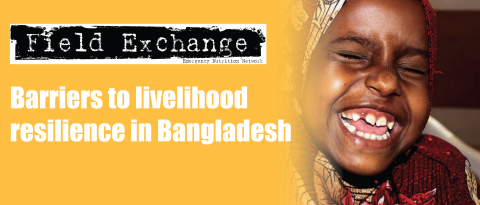Deworming children at military healthcare facilities in a combat zone: an opportunity not to be missed?
The BMJ published a letter1 in response to the deworming article above. This letter (summarised below) is written by members of the Royal Centre for Defence Medicine, Royal Centre for Defence Medicine, Birmingham, UK and represents an interesting perspective from medical-military personnel. (Ed)
As military practitioners with expertise in infectious diseases and surgery, the authors have followed the ebb and flow of the mass deworming debate with great interest. Although reports conflict as to whether routine deworming leads to demonstrable benefit in cognition, school attendance, and school performance, the World Health Organisation (WHO) recommends annual anti-helminthic treatment of all school-age children in areas where the prevalence is >20% or twice a year when the prevalence is >50%. Survey data indicates that prevalence of soil-transmitted helminths (STH) in several regions of Afghanistan is 20% to 50%, with some areas around Kabul >50%. A high proportion of Afghans are children and they continue to suffer the consequences of repeated infestation despite attempted eradication programmes.
Coalition military healthcare facilities have now been deployed in Afghanistan for some years. During 2012, surgical teams in the Role 3 Hospital in southern Afghanistan noticed multiple patients with evidence of worm infestation during laparotomy for abdominal trauma. The biggest deworming campaign in Afghanistan to date was undertaken in 2004, when the United Nations World Food Programme (WFP) in collaboration with the WHO, UNICEF, and the Afghan Ministries of Health and Education were able to treat 4.5 million children. However, this fell short of the total number of school age children (approximately 9 million) because a large proportion of these children do not attend any school, as circumstances mitigate against attendance. School attendance is poor primarily due to problems with accessibility and security, however, there is gender imbalance and school restriction due to poverty, with children having to work or being excluded from education due to marriage. Further measures to treat these children will need to reach beyond a school-based approach and exploit other opportunities.
Although the primary function of deployed medical assets in a theatre of war is to provide life, limb and eyesight saving treatment, humanitarian aid in the form of non-emergency treatment is also commonly provided to the local civilian population. Such aid is not limited to hospitals, but also provided at forward operating bases (FOBs) and patrol bases (PBs) by medical assets that augment combat units on the front line. Although accurate records are not available, it is estimated that thousands of children have received humanitarian aid of this kind during operations in Afghanistan from medical facilities other than hospitals. Such a widespread network of ISAF outposts with medical facilities may offer an opportunity to deworm children.
During the recent conflict, children have represented approximately 3% - 15% of the patients treated at deployed military hospitals and contribute up to 25% of the bed occupancy. These children have often sustained battle trauma including blast and missile injuries. The majority require surgical intervention with as many as 40% requiring admission to critical care. Chronic malnutrition in children is a major public health problem in Afghanistan, with a lack of adequate household food intake and suboptimal infant and young child feeding and hygiene practices contributing to poor nutritional status.
Strategic success in the current war in Afghanistan is much more complex than the defeat of an identifiable enemy. NATO has stated that its mission includes the need to "facilitate improvements in governance and socio-economic development in order to provide a secure environment for sustainable stability", and to "provide practical support for… humanitarian assistance efforts conducted by Afghan government organisations, international organisations, and nongovernmental organisations (NGOs)". In 2010, the American National Security Strategy stated that there is a "moral and strategic interest in promoting global health" and that there is a need to "strengthen health systems and invest in interventions to address areas where progress has lagged, including maternal and child health", and to seek the "elimination of important neglected tropical diseases". It is therefore impossible, the authors feel, to consider the international mission in Afghanistan without also considering the current and future health of the nation, especially of its children.
The authors go on to argue that military medical facilities in Afghanistan provide an opportunity to integrate a policy of routine deworming of children into their existing programmes of humanitarian support. Such opportunistic treatment is feasible, relatively inexpensive, simple, and has a very small risk of harm. Most importantly it may improve the lives of the children who receive it - even if there is little evidence that it might help the entire population. Furthermore, as each ISAF base and outpost hands over control to Afghan security and medical personnel during the transition of power, the continuity of healthcare to the local communities can only be enhanced by the education and training that will result from this legacy.
They do not propose a population based or mass deworming programme run by the military, but rather opportunistic deworming of those patients who have had the misfortune to require humanitarian assistance. Although it is now clearer that mass deworming programmes alone are not a panacea, this proposed individualistic approach is, the authors conclude, inexpensive, simple, and achievable; it may allow these children to return home with a slightly better chance of un-hindered development and growth.
1Naumann. D et al (2013). Deworming children at military healthcare facilities in a combat zone: an opportunity not to be missed? 10 January 2013
Imported from FEX website


